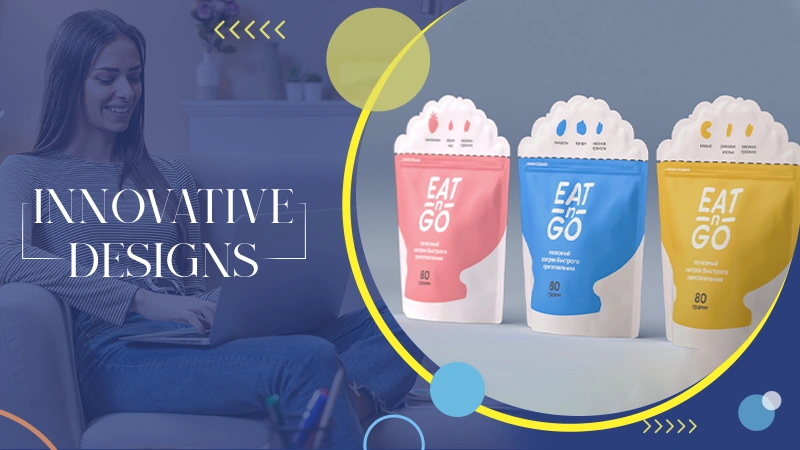Importance of Packaging
Humanity’s constant creativity and adaptability to develop new means of eating, dressing, and conducting business has propelled civilization from a tribal-based life. As a consequence of the preceding, including the perspective of people who identified demands, gaps, and possibilities to be met, various packaging strategies and technologies have been developed throughout most civilizations could not function without current varieties of metal, plastic, cartons, sheet, glass bottles, and other packaging materials like China Bopet Film. Using the minimalistic need parameter as an example, the emergence of all these distinct types of packaging has sparked an atmosphere of competition that benefits human civilization in that new and innovative technologies to generate goods, comfortability, durability, reduced prices, and produce new products are constantly being explored.
Even though food containers has been the significant implication so far, the progression of packaging has also enabled our digital age of marketing, which offers medicinal products, raw and processed food products, fragrance, cigarettes products, personal care products, clothes and shoes, furniture, light fittings, and whatever else you see have all been conveyed by, wrapped in, or persist from one of the three plastic wrapping categorizations of flexible, sturdy, or semi-rigid wrapping. The toothbrush, toothpaste, body powder, soap, and other items in someone’s bathroom are contained in bottles or containers created by developments in plastics, cardboard, metallic materials, and formulas. Living as we understand it would be different if we didn’t have potato chips, tea, coffee, bread, meats, eggs, veggies, fruits, and other foods that have either been prepared or packaged in plastic, paper, glass containers, or metal. The preceding reflects more significant cultural concerns about the relevance of packaging in general. More precisely, the procedures and associated features of packing in terms of advertising, production volume, living standards, advantages to humanity, honesty in marketing and substance, and climate change will be discussed, among other things. More precisely, the procedures and associated features of packing in terms of advertising, production volume, living standards, advantages to humankind, honesty in marketing and substance, and climate change will be discussed, among other things.
Packaging can matter when it comes to branding and distinguishing one’s goods from competitors. The appearance, style, coloring, form, and other characteristics serve to differentiate one’s company from others, making it easier for consumers who are familiar with or seeking to obtain a product to find it. “…a distinctive bottle layout…” or an exciting package might also be the cause a client chooses to acquire a fresh product in a market full of similar product kinds. Following that, the product’s capacity to achieve its claim in terms of flavor, efficiency, capabilities, durability, accessibility, and other characteristics helps buyers decide whether or not to repurchase it. However, before the second equation can be solved, the first one must be solved. That has not been the case, however. Recent advancements in polymers and formulation processes have reduced the cost of producing one-of-a-kind forms and patterns beneficial to ergonomics, efficiency, usage, or simply aesthetics.
The preceding emphasizes the significance of packaging in providing customers with fresh ideas, convenience, use, and function that may help drive sales. The previous is evidence of form being defined by a variable.
The development of ring-pull cans is another case of the packaging. We now accept this invention forgiven, almost forgetting how we used to open soda cans by pressing down, which typically resulted in leaking cola. Since adopting this innovative ring-pull opening mechanism, pop-top cans currently account for one-third of the beverage bottle sales, with two-thirds predicted by 2008. The significance of packaging in its simplest definition is that it achieves the goal of using the least amount of resources and wastage possible to transport its components to the final users efficiently and safely, with the contents arriving as planned. It’s important to remember that the inventive methods we use to package, preserve, transport, store, and promote all kinds of things hold our entire lifestyle together.
- Food packaging like China Aluminum Foil keeps perishable things from rotting too soon and, in the long term, increases the usable life of foods that would otherwise be unavailable to the millions of people who live in cities throughout the world.
- In general, Wrapping helps us improve the standard of living by producing things that can be carried to virtually any location on the planet, whether it’s food, cosmetics, pharmaceuticals, appliances, furniture, electronics, and so on.
- As the world becomes more urbanized, packaging will become an increasingly important way of supporting this growth. According to the statistics (Pongracz, 1998):
- Every day, 150,000 people are added to the present urban population totals.
- By 2025, it is expected that two-thirds of the world’s population will live in cities.
- As a result of the preceding, more people will live in cities in 2025 than would live in the world’s whole population in only ten years.
The above demographic statistics highlight the importance of packaging in our everyday lives, which has changed our way of life. When one assumes that Tokyo seems to have over 27 million people and Sao Paulo, Brazil, has over 16.4 million, the findings become much more critical.

Food packing, for example, makes efficient use of materials that might otherwise go to waste if processed in another way. Thanks to advances in food packaging and storage, food waste can be used as animal feed, dietary by-products, or fuel. Food in developing nations is believed to be around 20% and 50% due to either inadequate packing and preparation procedures or the lack of packaging entirely. Compared to Europe, where food waste is estimated to be between 2 and 3 percent, the previous becomes even more striking. The reality is that we must enhance our preservation of efficiency in all resources sectors, not only in meals. It’s been calculated that for every one percent growth in the use of food packing, the waste generated drops by around 1.6 percent.
Despite its excellent protective features, multilayer plastic wrapping is hard to recycle and is seen as an environmental issue. The ecological implications and reusability of six exemplary packaging methods are investigated in this study. Furthermore, it considers the whole product’s ecological effect. Two thermoplastic films, polyethylene (PE), (polyamide (PA), and PE/ethylene vinyl alcohol (EVOH), were studied, and also two vacuum bags (both PA/PE) and two stretch bagging (PE/polyvinylidene dichloride (PVdC) and PA/EVOH/PE). The environmental effect is mainly determined by the weight of the package and the amount of PA in it. One PE/EVOH film may be reprocessed, but only with significant losing quality. In general, the carbon emissions of packaged food are 54 times larger than the carbon emissions of packing. Compared to packaged meat, packaging manufacturers should make product safety a top concern given the minimal environmental impact of packing. Packaging has repercussions for individuals who want their products bought, for people who are the targets of this behavior, and for government intervention that is authorized to look after the interests of society.
Follow Us
Latest Post
















